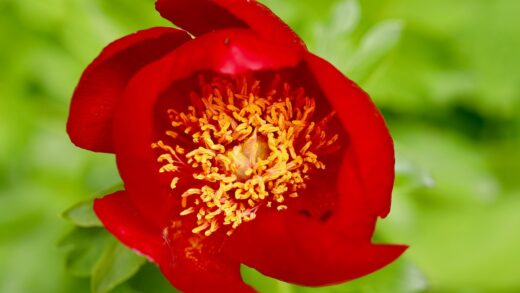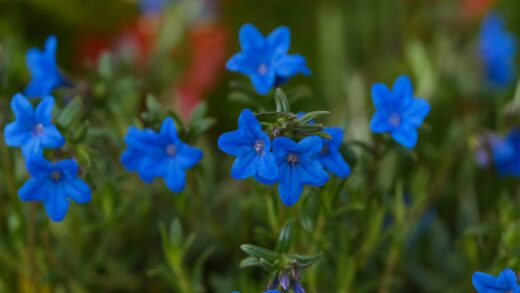The Japanese plum yew is a quintessential shade-loving evergreen, a characteristic that defines its role and value in landscape design. Its ability to not only survive but truly flourish in low-light conditions where many other plants languish makes it an invaluable asset for gardeners. Understanding its specific light requirements is the first and most critical step in ensuring its health, as its performance, foliage color, and overall vigor are directly tied to the amount and intensity of sunlight it receives. While it demonstrates some flexibility, its strong preference for shaded or dappled light environments is the guiding principle for its successful cultivation.
Thriving in the shade garden
The natural habitat of the Japanese plum yew is the understory of forests, where it grows beneath the canopy of larger trees, receiving filtered sunlight and protection from the harsh direct rays of the sun. This genetic predisposition is precisely why it excels in the shade garden. A location that receives full shade for the entire day, such as the north side of a house or in the dense shadow cast by mature trees, is an ideal environment for this plant. In these deep shade conditions, it will maintain its rich, dark green foliage and develop a lush, dense habit.
Many gardeners struggle to find evergreens that provide structure and year-round color in heavily shaded areas, often resorting to a limited palette of hostas and ferns. The Japanese plum yew fills this niche perfectly, offering a fine-textured, coniferous presence that contrasts beautifully with broad-leaved shade perennials. Its slow growth rate is also an advantage in the shade garden, as it will not quickly overwhelm its neighbors and requires minimal pruning to maintain its size and shape. Its tolerance for these conditions makes it a premier problem-solver for the darkest corners of a landscape.
When planted in full shade, the growth of the Japanese plum yew will be slow and steady. It is important for gardeners to have realistic expectations and not to mistake this deliberate pace for a lack of vigor. The plant is simply adapting its growth rate to the lower levels of light energy available for photosynthesis. The reward for this patience is an exceptionally healthy plant with a deep, almost black-green coloration that is often more intense in shade than when grown in more sun. This adaptability makes it a reliable foundational plant for creating a serene, woodland-style garden.
Furthermore, the shade not only provides ideal light levels but also creates a cooler, more moist environment, which the Japanese plum yew appreciates. The soil in a shaded location is less prone to rapid drying, which reduces watering needs and minimizes stress on the plant, particularly during hot summer months. This synergy between low light and favorable soil moisture conditions allows the plant to establish itself with greater ease and maintain its lush appearance with minimal intervention from the gardener.
More articles on this topic
Performance in partial sun conditions
While the Japanese plum yew is a true shade lover, it is also quite adaptable and performs beautifully in conditions of partial sun or partial shade. An ideal partial sun location is one that receives several hours of gentle morning sun followed by shade during the hotter, more intense afternoon hours. An eastern-facing exposure, where the plant is illuminated by the morning sun but protected from the strong afternoon sun by a structure or trees, is often considered a perfect balance. This amount of light can encourage slightly denser growth and a more compact habit compared to a specimen grown in deep shade.
In a location with dappled sunlight, such as beneath the canopy of tall, open-limbed deciduous trees like oaks or maples, the Japanese plum yew will also thrive. The shifting patterns of light and shadow throughout the day provide sufficient energy for robust growth while preventing the foliage from being exposed to prolonged periods of intense, direct sun. This environment closely mimics its native habitat and is often where the plant looks its absolute best, balancing healthy growth with the deep foliage color for which it is prized.
It is important to note that the definition of “partial sun” can vary significantly depending on the climate and geographical location. Four hours of morning sun in a cooler, northern climate is far less intense than the same duration of sun in a hot, southern region. In hotter climates, more shade is generally better, and even morning sun can be stressful if it is too intense. Gardeners must consider their specific local conditions when interpreting the plant’s light requirements and err on the side of more shade if there is any doubt.
When grown in these balanced light conditions, you can expect the Japanese plum yew to maintain excellent health and appearance. It will likely exhibit a slightly faster growth rate than in full shade, but it will still be slow and manageable. This versatility in tolerating a range of shade to partial sun conditions is what makes it such a flexible design element, suitable for a variety of garden situations from woodland edges to foundation plantings on the north or east side of a home.
More articles on this topic
The challenges of full sun exposure
Exposing a Japanese plum yew to full sun, particularly the intense, direct sun of the afternoon, is the most common mistake made in its cultivation and is strongly discouraged. This plant is not adapted to handle high levels of direct solar radiation, and the consequences of improper siting in a full-sun location can be severe and unsightly. The most immediate and noticeable symptom of too much sun is foliar damage. The needles will lose their deep green color, first fading to a pale, washed-out green, then turning a sickly yellow, and finally becoming brown and scorched.
This sun scorch not only ruins the aesthetic appeal of the plant but also significantly stresses its entire system. The damaged needles are less efficient at photosynthesis, which can lead to reduced vigor, stunted growth, and an overall decline in health. A sun-stressed plant is also more vulnerable to secondary problems, such as pest infestations and diseases, as its natural defenses are compromised. While a mature, well-established plant might tolerate more sun than a young one, it will rarely look its best and will always be living on the edge of its tolerance.
In addition to foliage burn, a full-sun location also leads to higher soil temperatures and more rapid moisture evaporation. This creates a hotter, drier root environment than the plant prefers, necessitating more frequent and diligent watering to keep it from suffering from drought stress. Even with adequate water, the combination of heat and high light intensity is simply contrary to the plant’s fundamental physiological needs. It creates a stressful environment that the plant must constantly struggle against, rather than a supportive one in which it can thrive.
There are very few, if any, situations where planting a Japanese plum yew in full sun is a good idea. If your garden is predominantly sunny, it is far better to choose a plant that is naturally adapted to those conditions rather than trying to force this shade-lover to tolerate a site it is not suited for. By respecting its clear preference for shade, you are setting the stage for a healthy, beautiful, and low-maintenance plant. For sunny spots, consider sun-loving evergreens like junipers or arborvitae, and save the Japanese plum yew for the shaded areas where its unique attributes can truly shine.
Recognizing signs of improper light exposure
Learning to read the visual cues your Japanese plum yew provides is the best way to determine if its light conditions are appropriate. As mentioned, the most obvious sign of excessive sun exposure is a change in foliage color. If the needles on the most sun-exposed parts of the shrub are turning yellow, bronze, or brown, while the foliage in the more shaded interior of the plant remains green, it is a clear indication of sun scorch. This is a direct signal from the plant that it is receiving too much intense light and is struggling to cope.
Conversely, while the Japanese plum yew thrives in shade, there is a limit to its tolerance. In extremely dense, dark shade with very little ambient light, the plant may become overly sparse and leggy. The growth may appear stretched and open, with greater distances between the sets of needles on the stems. While the plant will likely survive in these conditions, its appearance may be less full and dense than desired. If you observe this type of weak, open growth, providing slightly more ambient or dappled light could encourage a more compact and lush habit.
The overall health and vigor of the plant are also good indicators. A plant in the correct light environment will exhibit steady, if slow, new growth each spring that is a healthy, vibrant green. If the plant seems to be declining, with little to no new growth, and you have already ruled out problems with water and soil, it is worth re-evaluating its light exposure. A stressed plant, whether from too much or too little light, will not perform to its full potential.
Ultimately, the plant itself is the best guide. A healthy Japanese plum yew in its ideal lighting will have dense, turgid foliage of the deepest, most lustrous green. It will look relaxed and healthy, not stressed or faded. By observing your plant through the seasons and paying attention to these subtle signs, you can confirm that you have provided it with the correct light exposure or decide if it needs to be transplanted to a more suitable location in your garden for its long-term health and beauty.
📷: A. Barra, CC BY-SA 4.0, via Wikimedia Commons


















